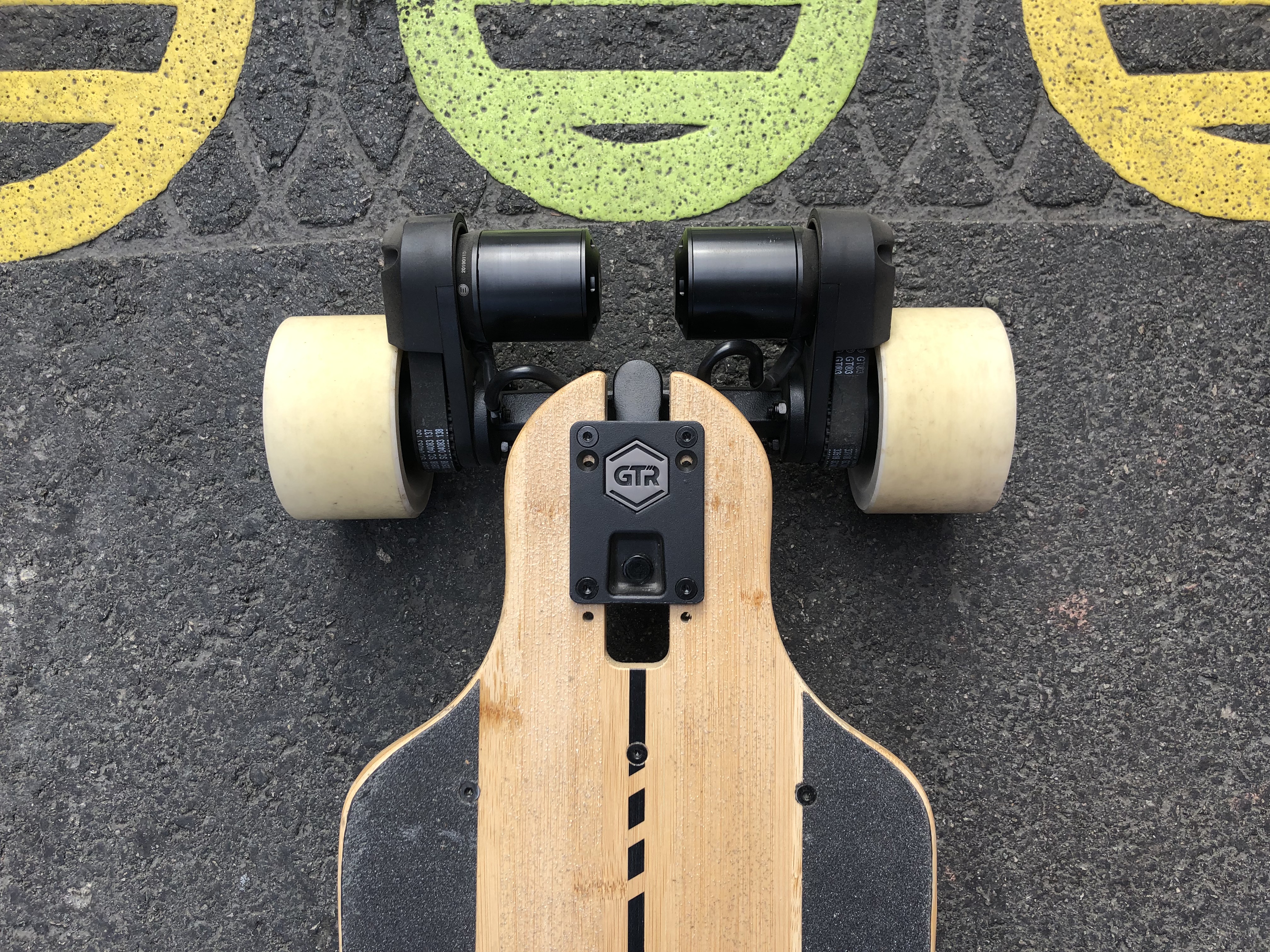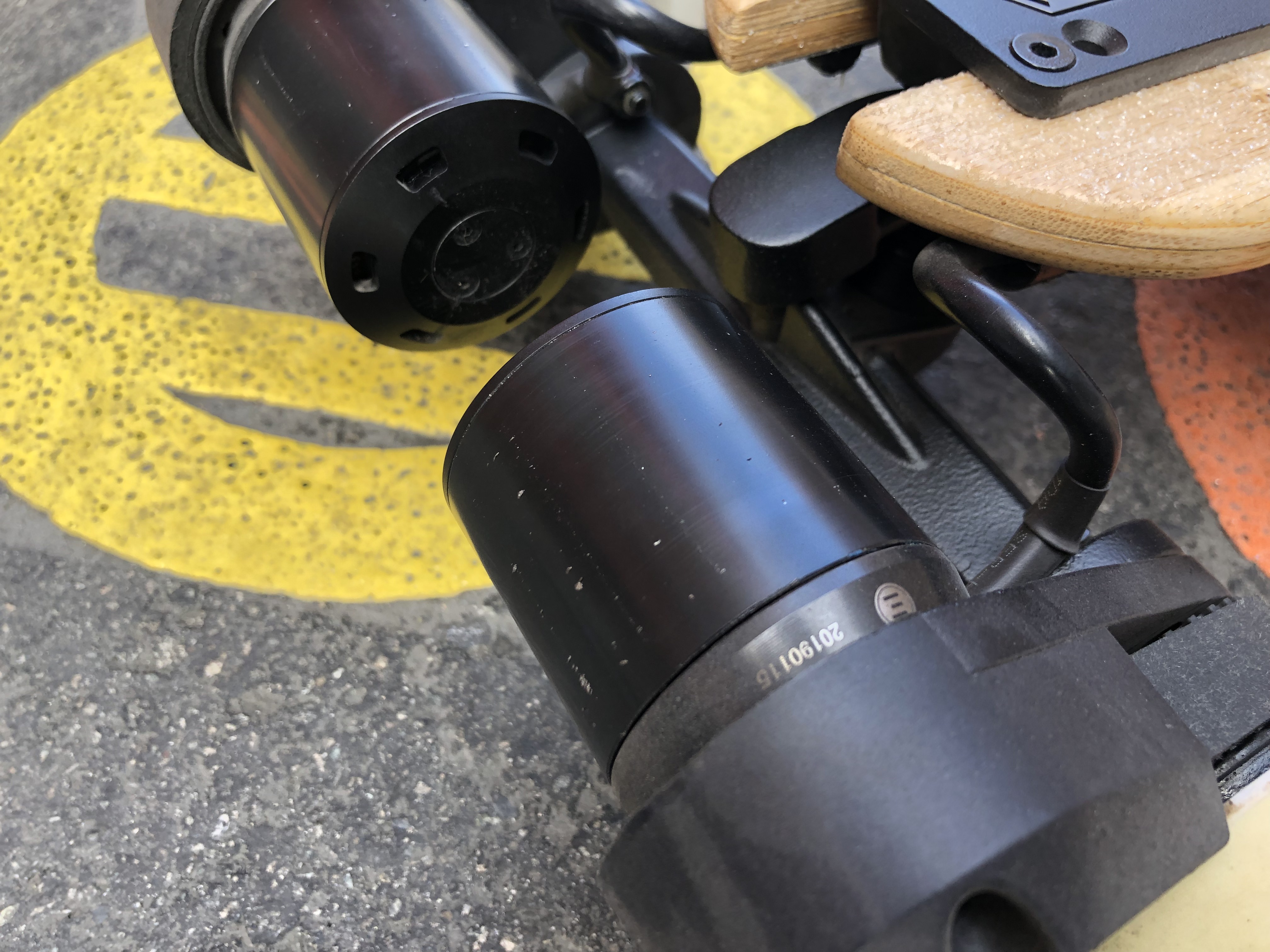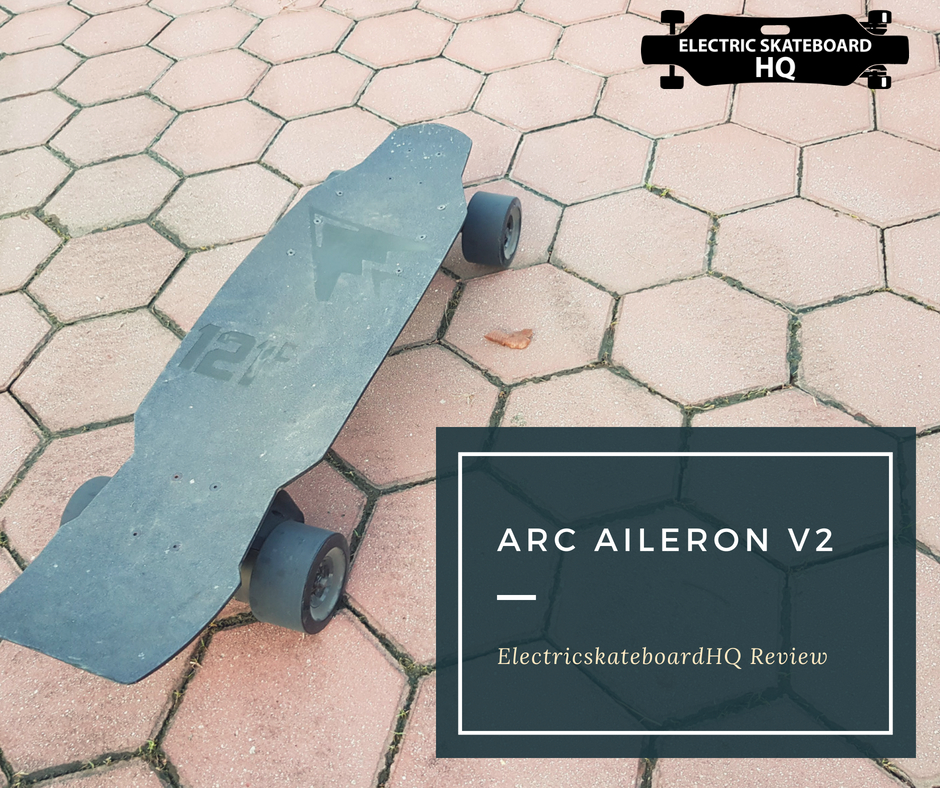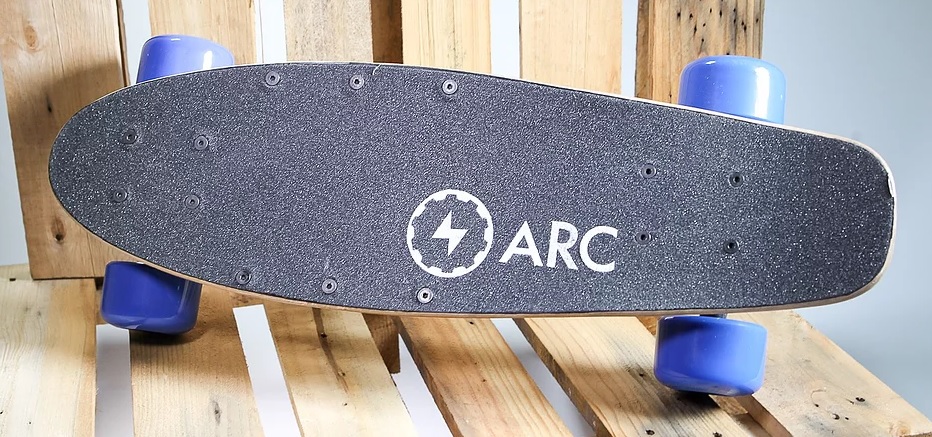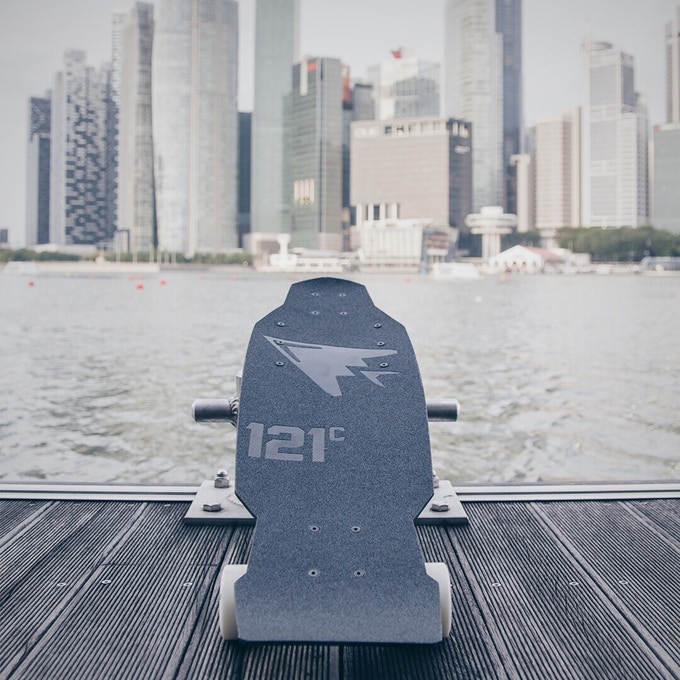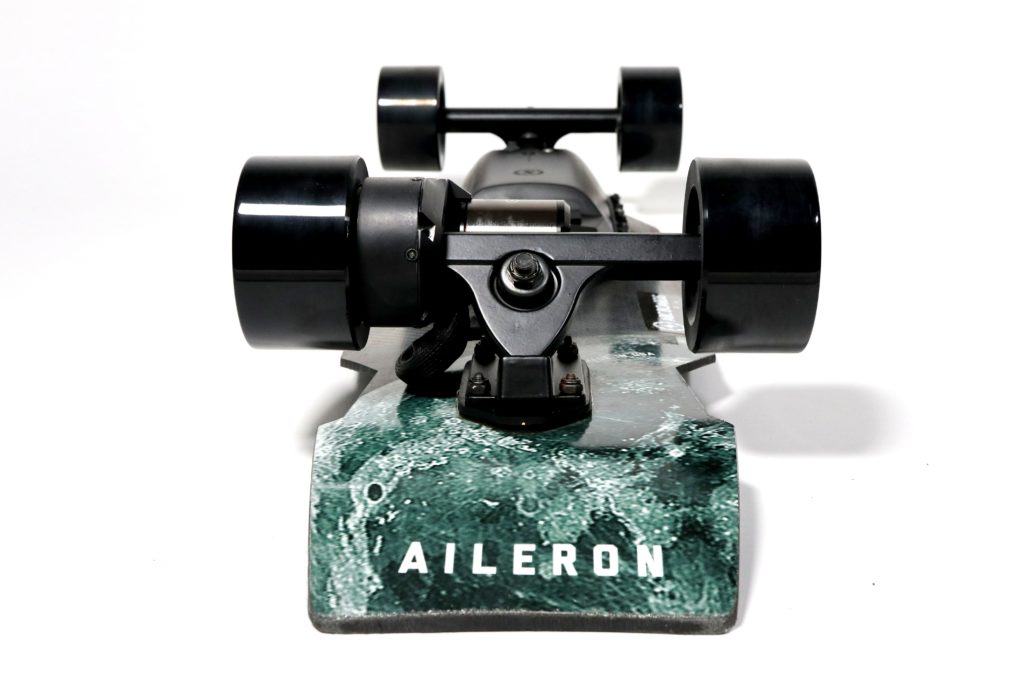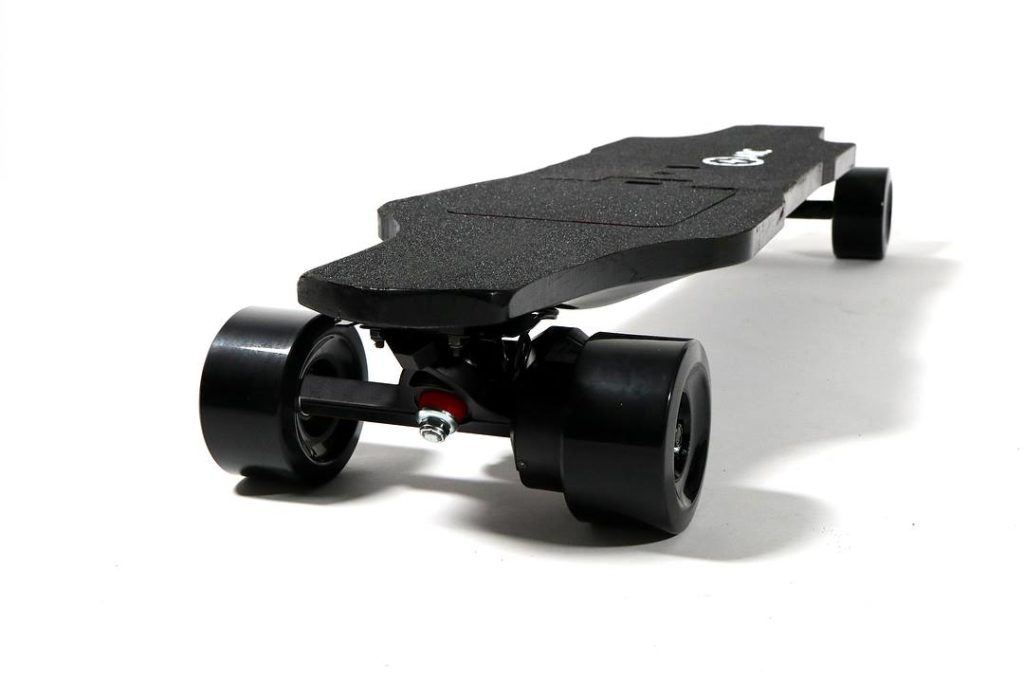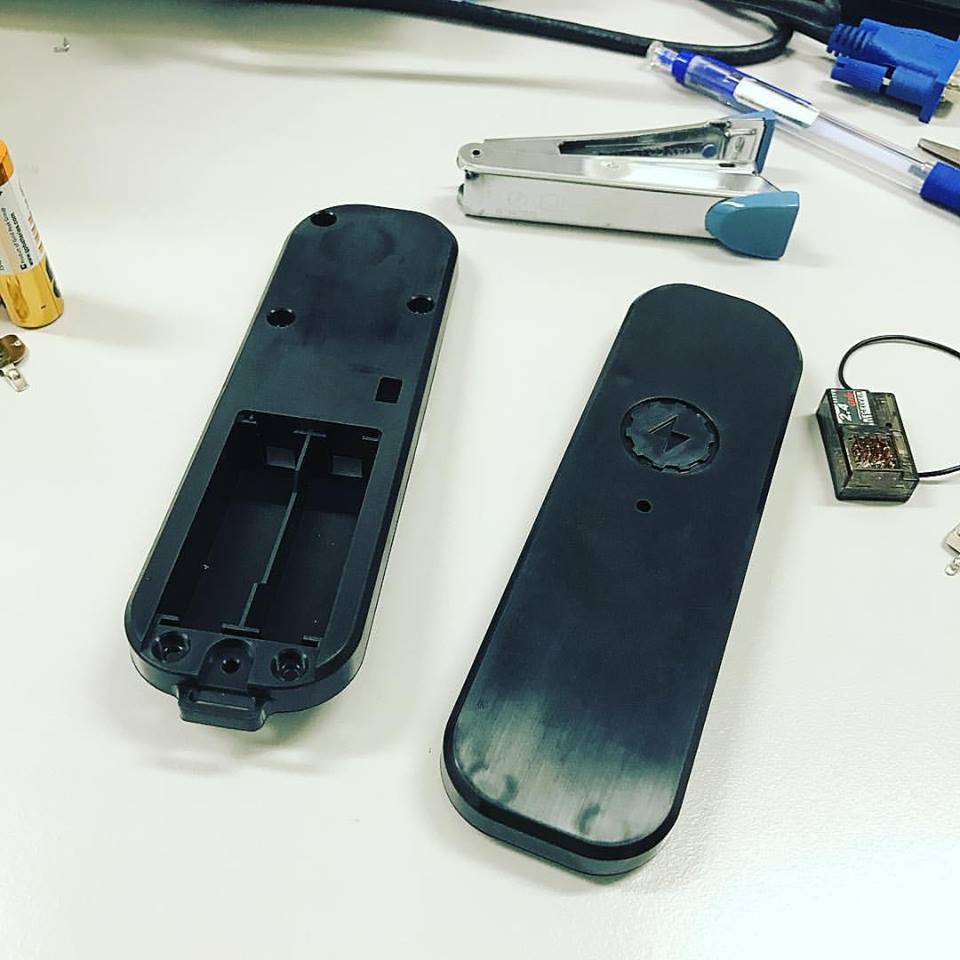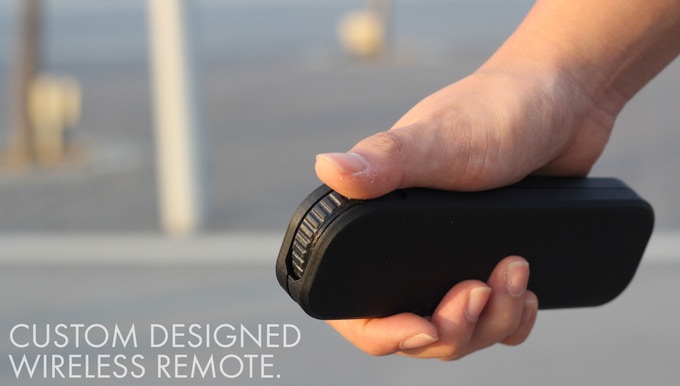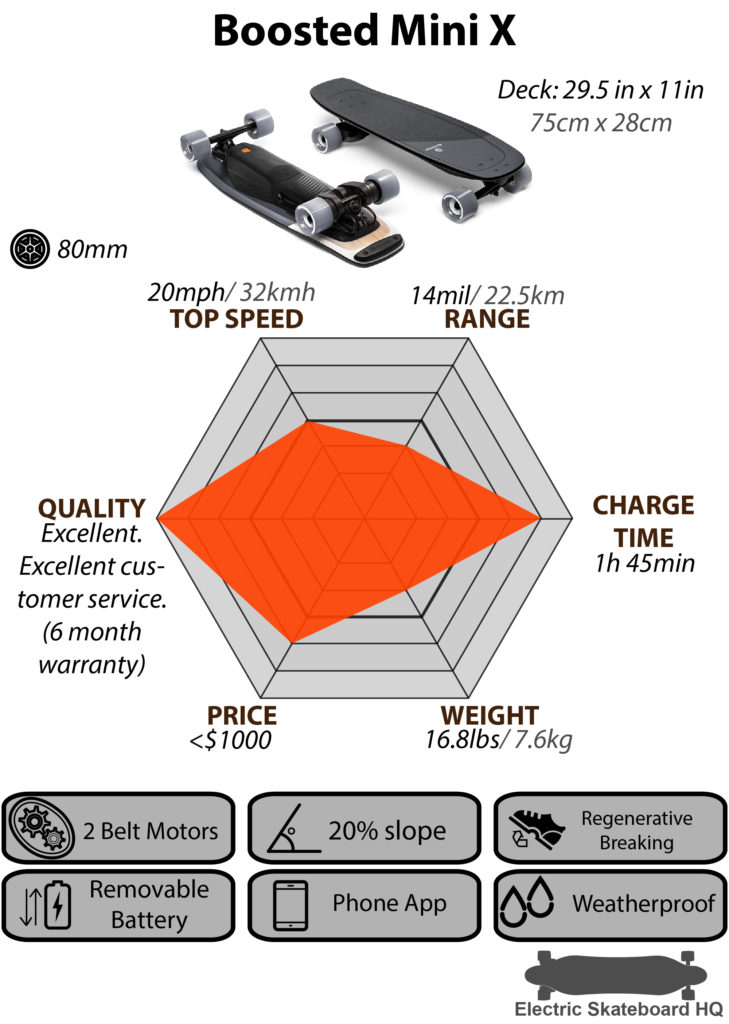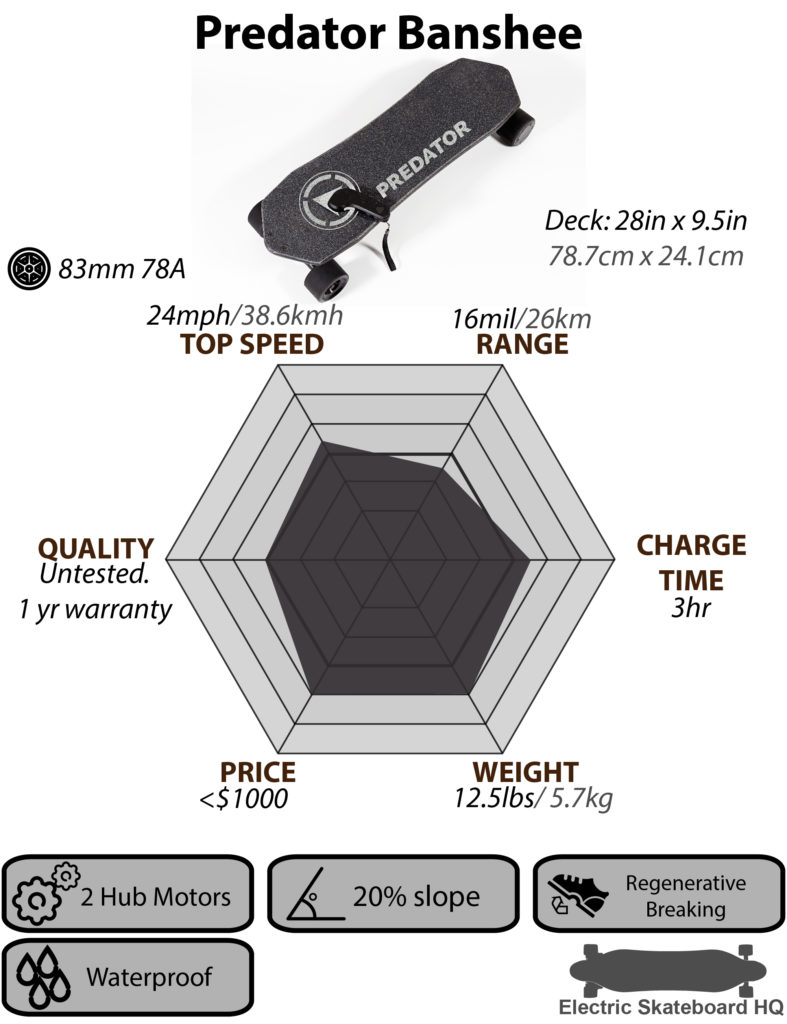This is the Maxfind Max 6 which comes in two options: $569 for the version with PU wheels and $629 for the version with 105mm Galaxy Cloud Wheels. This means that the Max 6 is one of the very few affordable belt-driven electric longboards available out there.
Max 6 is a little bit pricier than Wowgo 3E, which was our top pick for the best electric longboard under $500; but it does undercut other midtier belt-driven electric longboards like the $629 Wowgo Pioneer X4, and the $699 Meepo NLS 3.
Read our review of the Wowgo 3E here.
Being one of the most affordable belt-driven electric longboards is a good pricing strategy, especially considering Max 6 has the specs that punch above its weight, too.


Maxfind Max 6 Specs:
| Price | $569 |
| Battery | 360Wh 10s 21700 Samsung 10Ah battery |
| Controller | Hobbywing ESC |
| Top Speed | 26 Mph (42 Kph) |
| Range | 31 miles (50 km) |
| Deck | X Composite deck |
| Motor | 900W*2 Belt drive |
| Net Weight | 20.9lbs (9.5kg) |
Deck – X Composite Deck:



Starting with the deck, the Max 6 uses an X composite deck, which is said to be stronger than your average Maple and Bamboo composites. It has only a slight flex.
The deck is relatively narrow, even by our Asian-feet standards, with part of our feet sticking out most of the time. We do like the pronounced U-shaped concave, and our feet are nice and snug with it. Design-wise, the shock-absorbing grip tape gives a pretty neat cyberpunk aesthetic, a nice change from the many minimalistic prints on the market.
Battery – 360Wh 10s 21700 Samsung 10Ah battery:


Moving onto the battery, the Max 6 is powered by 21700 Samsung 40T cells, which are pretty solid cells. It’s too bad Maxfind decided on a 10s2p configuration instead of 12s2p, like the one found on both Wowgo Pioneer X4 and Meepo NLS 3. However, the range on the Max 6 turns out to be better. It is marketed to have a range of up to 31 miles (50km), and in our tests, we managed to make it to 25.5 miles (41 km). That’s 50% more than what we got from the Pioneer X4 and NLS 3.
A concern could be that using 10s instead of a 12s battery configuration gives the board less power, but we will talk about that a little bit later.
ESC and Remote -Hobbywing ESC:



Next, Maxfind went with the tried and true Hobbywing ESC. For the remote, it’s likely the standard Hobbywing remote with custom casing. It has a screen for telemetry, comes with 4 speed settings, and you can also pair it with their mobile app to customize your ride profile.
Motor – Dual 900w Belt Drive Motors:



Moving onto the motors, the Max 6 runs on some hefty dual 900W belt drive motors, which are pretty powerful for a mid-range board. The marketed top speed is a pretty modest 26 mph (42 kph), so it’s not a surprise that we managed to hit that speed in our test.
It has a 1:2.7 gear ratio, which is on the higher side.
Trucks And Wheels – Custom 45° Max Iii Trucks And 90mm Pu Wheels Or 105mm Galaxy Cloudwheels



Next, as for the trucks and wheels, the Max 6 uses their own custom 45° Max III Trucks.
It’s a CNC-forged truck, which is more durable and safer than cast trucks. For some skaters, having a forged truck is a must for safety, but finding one on a $600 board is rare, so this is a big plus point for the Max 6.
As for the wheels, you have a choice between 90mm Polyurethane wheels or a 105mm Galaxy Cloudwheels upgrade. The board also weighs about 20.9 lbs or 9.5 kg, which is pretty light and easy to carry around.
RGB Lights:



A stand-out feature is definitely their RGB atmospheric lighting, which is a collaboration with the Soundynamic brand and features sleek RGB lights on the sides of the deck.
The RGB light cycles through 3 modes: the first one is where the color switches, 2nd mode is breathing pattern, and then the last mode is blinking. The color switches by default and cannot stay a single color, to our disappointment. You can turn the lights on and off with the remote. It also has a brake light that will turn red when we brake.
Although the lights are not as bright as the LED lights lining the deck, they still add some nice flavor to the board.
Specs Summary of Maxfind Max 6:



All these years, Maxfind’s strategy has been to “price the board a little bit higher than the competition, and justify the price with higher quality parts and prettier design” The Max 6, however, is different. It arguably gives the best value for $549, especially if you value the ambiance lighting.
To illustrate, let’s compare the Max 6 to the $449 Wowgo 3E. The Maxfind Max 6 is a pretty good deal here as it has a longer range thanks to using 21700 Samsung 40T cells. It also has a stronger motor, CNC trucks, and lights.
On the other hand, when you compare up against the $629 Wowgo Pioneer X4 and $699 Meepo NLS 3, the Max 6 fairs pretty well, too.
The negatives are that it has a smaller battery and weaker power, but the positives are that it has forged instead of cast trucks and, again, has ambient lights. That’s why, if you value forged trucks and ambient lights, and are satisfied with a 10s battery, Maxfind Max 6 will be, on paper, the best board in the $500-$600 price range.
Read our review of the Meepo NLS 3 here.
Read our review of the Wowgo Pioneer X4 here.
Riding Experience of the Maxfind Max 6


The Max 6 has torque, it felt stronger than the Wowgo 3E on the get-go. The higher gear ratio probably plays a part here. Max 6 certainly gets away with using a 10s battery instead of 12s.
However, when compared against higher priced Meepo NLS 3 and the Wowgo Pioneer X4, the Max 6 does lag behind in torque and power. This is probably how the Max 6 has a lot more range than those two, by dialing back on the power and increasing battery efficiency.
The Max 6 gets to top speed pretty easily and is very stable all the way. But we do feel the trucks are a bit too resistant to turns. Let’s just say they weren’t the most responsive trucks we ever tested, but they are sure as hell stable. We tried loosening up the trucks, but even then, it was still one of those trucks that just wanted to go straight. With that said, carving is not the most fun on this board, but changing the bushings may help in these aspects.


Overall, the board feels comfortable. As we said, the concave makes our feet feel pretty welcome, and of course, Hobbywing ESC means completely smooth acceleration and braking.
The board wasn’t the best at reducing road vibration, given that it uses a stiffer deck. However, the Max 6, being a belt-driven board, is obviously better than any hub-driven board. If you really want a smoother ride, you can always just put on the Cloud Wheels.
Verdict on the Maxfind Max 6:



As you can see, Maxfind Max 6 is not perfect, a $569 board is bound to have some flaws. The Max 6 doesn’t have the most thrilling top speed, doesn’t have the most enjoyable trucks, and the built-in ambiance light is not the most eye-catching.
With that said, it is still one of the best options at its price. It has an extraordinarily good range, safer forged trucks, and, while not our favorite light setup, it is at least there. We’ve reviewed many Maxfinds, and so far, the Max 6 is our clear favorite and we wholeheartedly recommend it to anyone looking for something below $600.
If you are interested in buying the Maxfind, be sure to check out our affiliate discount link here and use code: “ESKATEHQ” to receive 5% off during checkout.
It will help you get a small monetary discount and help us out too. On top of that, you’ll be tagged as an Electric Skateboard HQ customer and probably be treated better. Cheers!





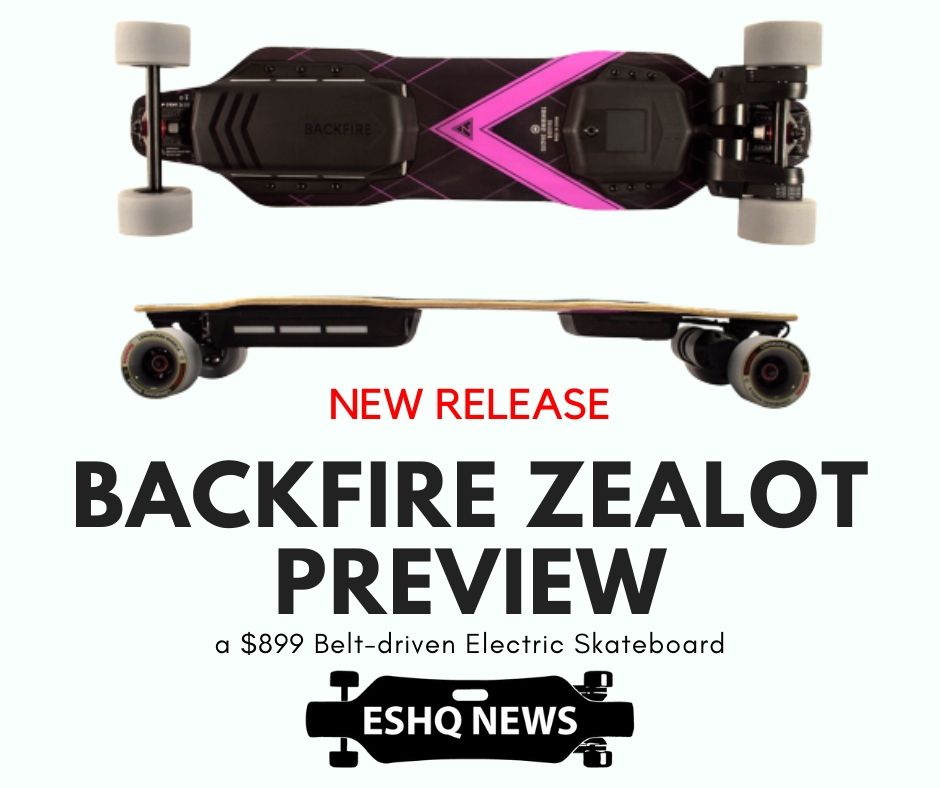









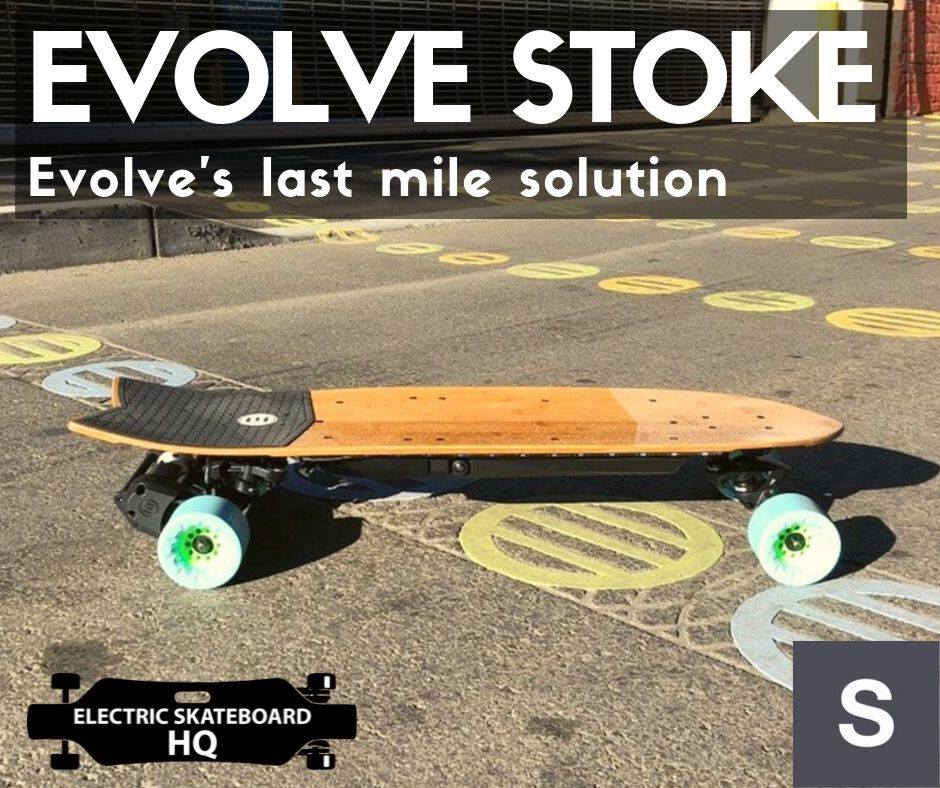








![[Updated] Evolve Bamboo GTR First Look & In Depth Review – Evolve, Evolved](https://www.electricskateboardhq.com/wp-content/uploads/2019/05/Evolve-Bamboo-GTR.jpg)





